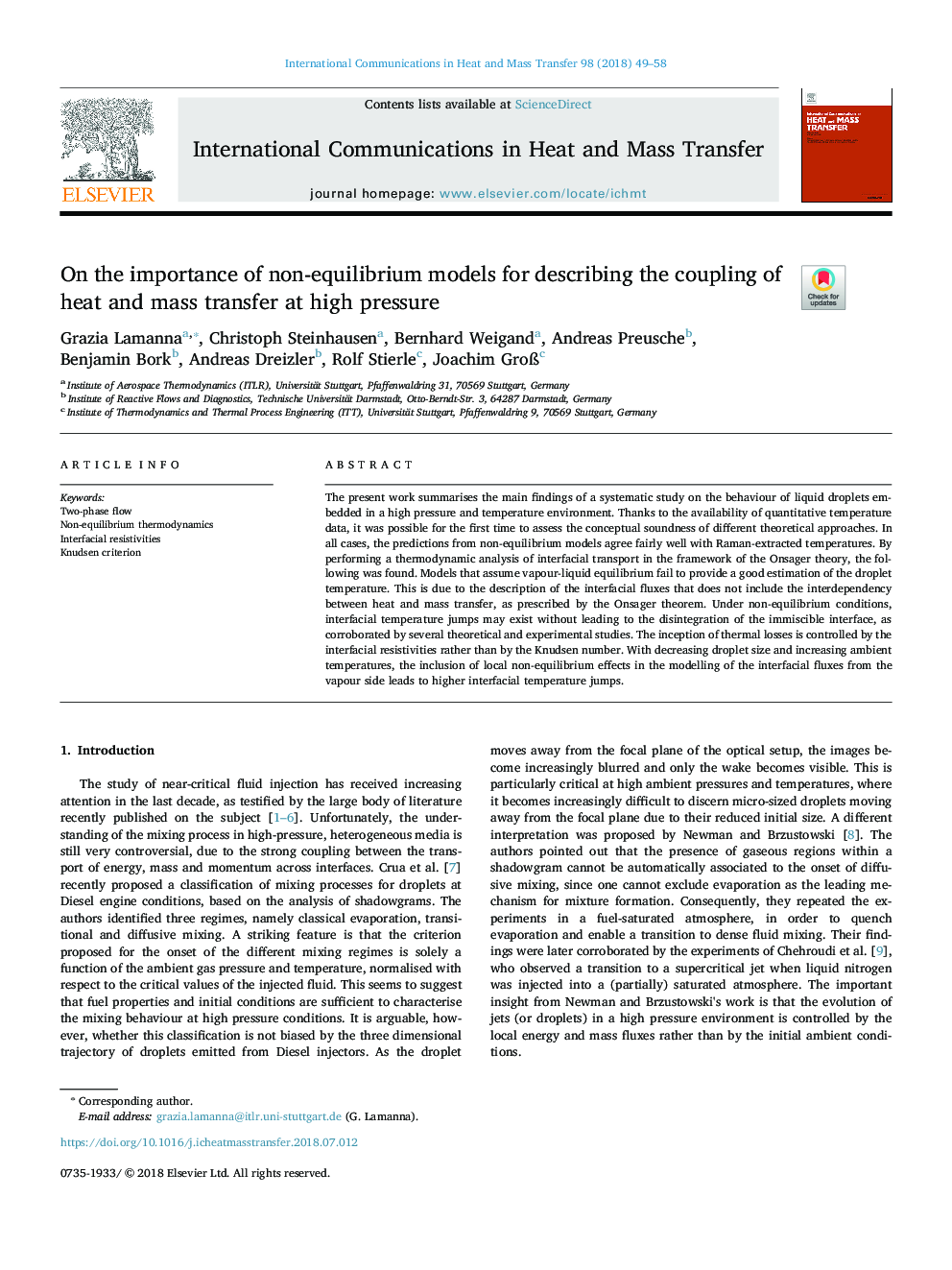| Article ID | Journal | Published Year | Pages | File Type |
|---|---|---|---|---|
| 10146339 | International Communications in Heat and Mass Transfer | 2018 | 10 Pages |
Abstract
The present work summarises the main findings of a systematic study on the behaviour of liquid droplets embedded in a high pressure and temperature environment. Thanks to the availability of quantitative temperature data, it was possible for the first time to assess the conceptual soundness of different theoretical approaches. In all cases, the predictions from non-equilibrium models agree fairly well with Raman-extracted temperatures. By performing a thermodynamic analysis of interfacial transport in the framework of the Onsager theory, the following was found. Models that assume vapour-liquid equilibrium fail to provide a good estimation of the droplet temperature. This is due to the description of the interfacial fluxes that does not include the interdependency between heat and mass transfer, as prescribed by the Onsager theorem. Under non-equilibrium conditions, interfacial temperature jumps may exist without leading to the disintegration of the immiscible interface, as corroborated by several theoretical and experimental studies. The inception of thermal losses is controlled by the interfacial resistivities rather than by the Knudsen number. With decreasing droplet size and increasing ambient temperatures, the inclusion of local non-equilibrium effects in the modelling of the interfacial fluxes from the vapour side leads to higher interfacial temperature jumps.
Related Topics
Physical Sciences and Engineering
Chemical Engineering
Fluid Flow and Transfer Processes
Authors
Grazia Lamanna, Christoph Steinhausen, Bernhard Weigand, Andreas Preusche, Benjamin Bork, Andreas Dreizler, Rolf Stierle, Joachim GroÃ,
